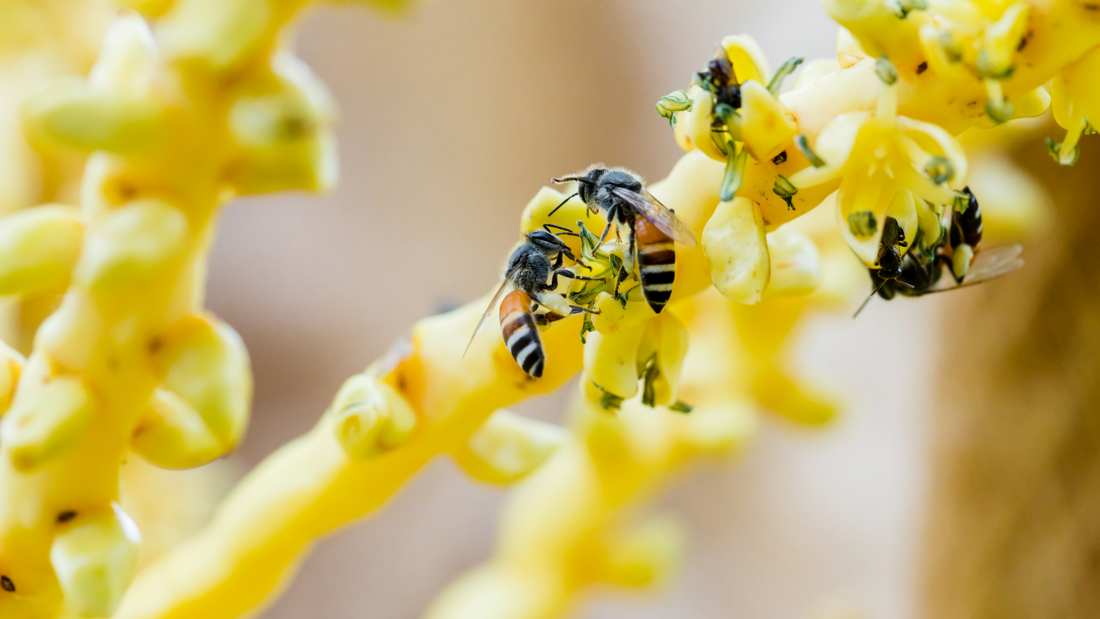The Delicate Dance of Nam Hom Coconut Tree Pollination by Bees in Ratchaburi, Thailand Impact on Seasonality and the Environment.

Ratchaburi, Thailand, is a land of stunning landscapes and rich biodiversity. Amidst its natural beauty, the Nam Hom coconut trees hold a special place. These trees are not only a source of delicious and aromatic coconuts but also a testament to the remarkable interplay between nature and the environment. The secret behind the bountiful harvest of Nam Hom coconuts lies in the intricate partnership between bees and these coconut trees.
The Nam Hom Coconut Trees of Ratchaburi
Nam Hom, which translates to "fragrant water," is an apt name for the coconuts that grow on these trees. Renowned for their unique taste and intoxicating aroma, Nam Hom coconuts are a staple ingredient in Thai cuisine and beverages. What sets these coconuts apart is their distinct flavor profile, attributed to the high sugar content and unique fatty acids present in them.
The Dance of Pollination
At the heart of the Nam Hom coconut's story is a silent, delicate dance that takes place high above the ground. Bees, nature's pollinators, play a vital role in this process. As the coconut trees bloom, they produce flowers tightly packed with nectar and pollen. These flowers are too small to be effectively pollinated by the wind. This is where bees come in. Local bee species, particularly the Asian honeybee (Apis cerana), take on the responsibility of pollinating Nam Hom coconut trees. They collect nectar from the flowers, inadvertently transferring pollen from one flower to another in the process. This pollination is essential for the trees to produce fruit. Without the bees' diligent work, the Nam Hom coconut harvest would be significantly compromised.
Impact on Seasonality
The Nam Hom coconut trees in Ratchaburi follow a distinctive pattern of flowering and fruiting. This pattern is closely linked to the changing seasons. Typically, these trees flower during the hot and dry months of February to April. This strategic timing ensures that the bees have ample nectar to collect, while the abundance of flowering plants benefits the entire ecosystem. The synchronized flowering also aligns with the behavior of local bee populations. During these months, bee colonies are at their strongest, ensuring efficient pollination. As the Nam Hom coconuts mature over several months, the bees continue to play a role by protecting the developing fruits from pests and predators. This harmonious connection between the trees and the bees underscores the remarkable balance of nature in Ratchaburi.
Environmental Impact
The interdependence between Nam Hom coconut trees and bees extends beyond their mutual benefit. This ecological partnership contributes to the overall health of the environment. The bees' pollination activities support the reproduction of not only coconut trees but also a variety of other plants. This, in turn, enhances the overall biodiversity of the region. Additionally, the Nam Hom coconut groves act as vital green buffers, preventing soil erosion and promoting water conservation. These trees help stabilize the soil, especially in the face of heavy rains or droughts. Their deep roots also facilitate water infiltration, which is crucial for maintaining groundwater levels.
The captivating story of Nam Hom coconut tree pollination by bees in Ratchaburi, Thailand, is a testament to the intricate relationships that shape our natural world. This partnership between trees and bees showcases the delicate balance of nature, where each species relies on the other for survival and prosperity. The fragrant Nam Hom coconuts are not only a culinary delight but also a reminder of the essential role that bees play in shaping the landscape, impacting seasonality, and preserving the environment in this remarkable region.

